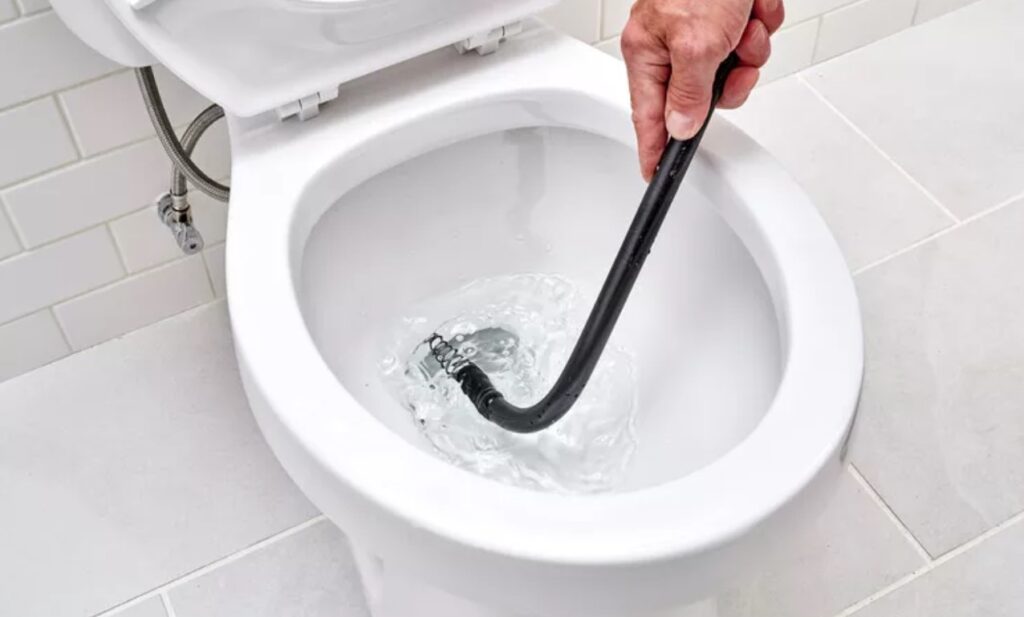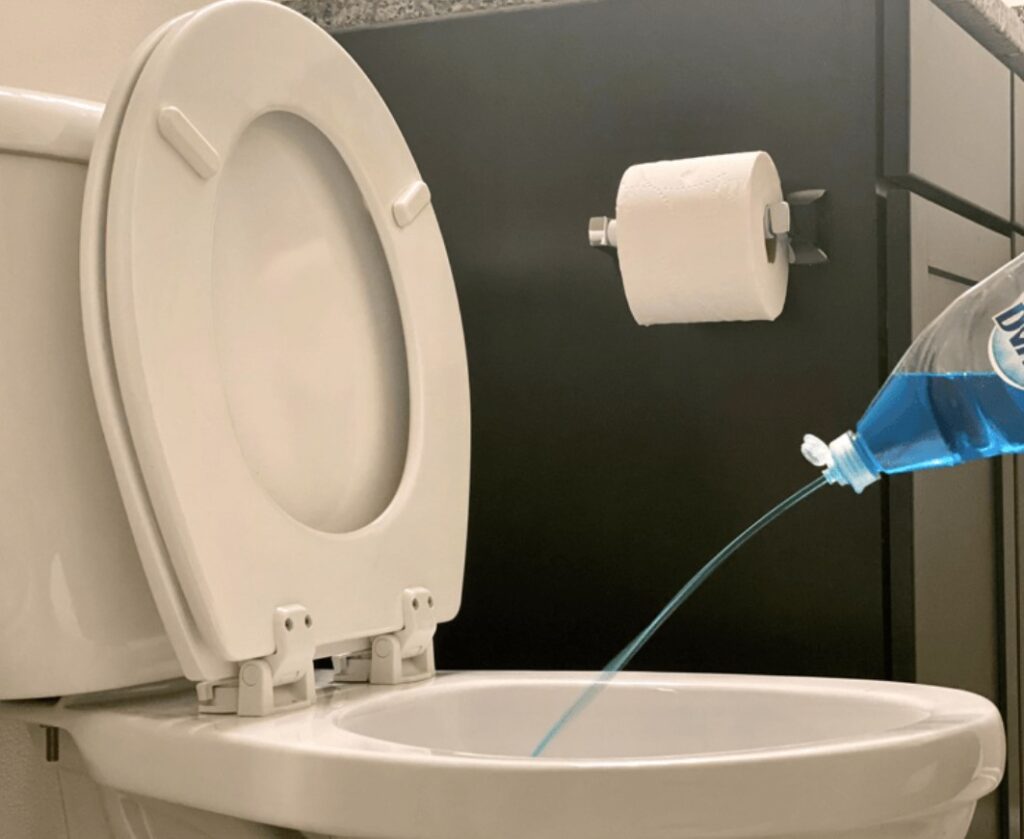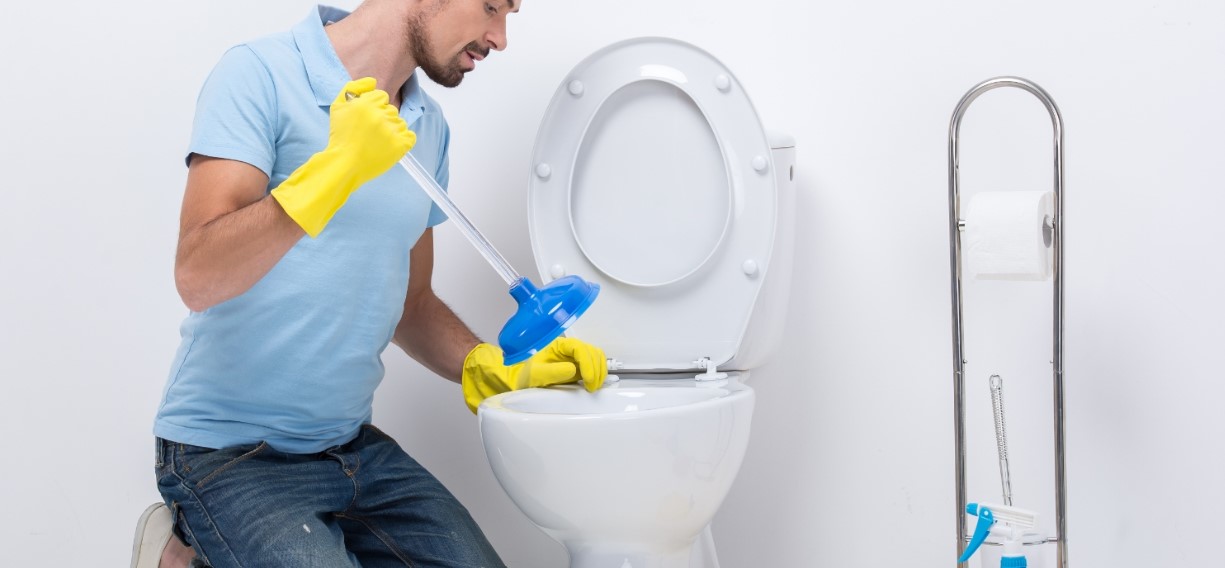So, how to fix a slow draining toilet, when it comes to toilets that are not flushing properly, there can be a variety of reasons why. Common causes include clogged pipes, a faulty float valve, or an improperly installed flapper valve. It’s important to identify the specific issue in order to determine the best course of action to take.
If your toilet is slow draining, it’s likely due to a clogged pipe. The first step in fixing this issue is locating the blockage. You may need to unscrew the bolts and remove the tank lid to get access to the pipes inside. With a flashlight, you can then inspect the pipes for any obstructions or blockages that may be causing the problem.
If the clog is visible, you can try unclogging it yourself with a plunger or plumbing snake. If these methods don’t work, you may need to call in a professional plumber to help remove the obstruction.
Another common cause of slow draining toilets is a faulty float valve. The float valve, also referred to as a ballcock, regulates the amount of water that flows into the tank. If the float valve isn’t working properly, it can cause excessive water to enter the tank, leading to slow draining. To fix this issue, you may need to adjust or replace the valve altogether.

Lastly, an improperly installed flapper valve could be causing how to fix a slow draining toilet. The flapper valve is located at the bottom of the tank and helps control water flow when the toilet is flushed.
If it’s not properly adjusted or installed, it can cause water to slowly leak out of the tank into the bowl, leading to slow draining. To fix this issue, you can either adjust the valve or replace it completely.
By identifying the specific cause of your toilet’s slow draining and taking action to address it, you can help save yourself from spending extra money on your plumbing bills each year.
What Causes A Slow Draining Toilet?
Low Water Levels In Your Toilet Tank
The most common cause of low water levels in a toilet tank is when the water supply tube that runs from the tank to the bowl wears down or gets blocked. This can cause a decreased flow of water into the tank, resulting in a slow flush.
In some cases, a worn or clogged ballcock valve can also contribute to the issue. If you notice the water in your toilet tank is lower than usual, it’s important to check the water supply tube and ballcock valve for any clogs or damage that may be causing the issue.
If neither of these issues are present, then there could be a problem with the float. The float is an internal part of the toilet that determines when the tank is full.

If it’s not working properly, then the water level in your tank can become too low, causing a slow flush. In this case, you may need to replace the float or other parts of your toilet to restore proper water levels and improve flushing performance.
No matter the cause of your slow flush, it’s important to identify and fix the problem as soon as possible. Low water levels in your toilet tank can lead to a clogged drain or other potential issues that may cause further damage or health risks.
If you’re unsure how to proceed with the repair, it’s best to contact a professional for assistance. They can help ensure that your toilet is functioning properly and that your family’s health and safety are not at risk.
Different Ways You Can Fix a Slow Draining Toilet:
Remove the Damaged Fill Tube
When the fill tube in your toilet becomes damaged, it can cause a number of issues. The most common symptom is the tank filling with water and then overflowing into the bowl, which causes the valve to shut off and prevents the bowl from getting a full flush.

This can be an alarming experience, as it means that no matter how many times you try and flush the toilet, it won’t be working properly.
If you suspect that your fill tube is damaged, then follow these steps to replace it:
- Start by shutting off the water supply to your toilet at the wall valve and flushing the toilet so that all of the remaining water drains from the tank.
- Remove the damaged fill tube from the overflow tube and flush valve assembly. Use a pair of pliers to grip the tube and gently pull it out from its clip-on connection at the bottom of the tank. Note that, depending on your toilet model, you may need to remove a plastic ring first before being able to remove the tube.
- Take your new fill tube and insert it into the clip-on connection at the bottom of the tank, being sure that it is firmly connected.
- Reattach any plastic rings or washers that were removed for access to the fill tube.
- Turn your water supply back on and flush the toilet to check that it is now working correctly. If there are any issues, you may need to adjust or replace the fill tube again.
By following these steps you can quickly and easily replace a damaged fill tube in your toilet without any expensive plumbing repairs.
Unclog With a Combination of Drain Cleaner and Dishwashing Soap
Unclogging a toilet can be a daunting task, but it doesn’t have to be. Unclogging with a combination of drain cleaner and dishwashing soap is an effective way to get your toilet back in working order.

To start, pour one gallon of hot water into the toilet bowl and let it sit for a few minutes. Note that if you have an old porcelain toilet, hot water may cause cracks in the bowl so it is best to avoid using hot water for this method.
Once the hot water has sat for a few moments, find some toilet-approved drain cleaner and pour a small amount into a bowl. Depending on the drain cleaner’s instructions, flush it immediately or let sit for a while.

Next, remove the lid of the toilet and add a small amount of dishwashing soap to the mix. This will help break up any blockage that is clogging the drain. Once all ingredients are in place, wait about 10-15 minutes for the solution to take effect and then flush the toilet. This should unclog the toilet and get it back in working order.
If this method does not work, you may have a more serious issue with your plumbing that requires professional help. Unclogging a toilet is never fun but with this simple guide, it doesn’t have to be as difficult as it may seem. So, don’t wait – unclog your toilet with this combination of drain cleaner and dishwashing soap today!
Replace the Damaged Fill Valve
If your toilet is running continuously and you have noticed a rise in your water bill, then it may be time to check your fill valve. A damaged or worn-out fill valve can lead to water wastage and slow draining toilets.
To replace it, first shut off the water supply to the toilet by turning off the valve behind it. Then lift the tank lid and flush the toilet, so all the water drains out. Use a towel to mop up any remaining liquid.

Next, unscrew the nut that connects the water hose to the bottom of the fill valve with a wrench and pull it away from its base. Insert your new fill valve into the hole left by the previous one and secure it with a nut underneath. Replace the water supply hose and tighten the connections with a wrench.
Finally, turn on the water supply to your toilet again and check that everything is working properly. If all goes well, you should no longer experience slow draining or continuous running from your toilet.
FAQ:
What can you put down a toilet to unclog the pipes?
Unclogging a toilet using natural ingredients is a great way to avoid harsh chemical cleaners and their potentially harmful effects. To make your own homemade toilet drain cleaner, start by pouring one cup of baking soda into the toilet bowl. After that, pour two cups of white vinegar over it and let it sit for a few minutes.
Finally, add a half gallon of hot water and let the solution sit overnight. Dish soap can also help loosen more stubborn obstructions. After allowing the solution to work its magic, flush the toilet in the morning to see if it has cleared out the blockage. If not, you may need to call a plumber for more serious clogs.
Why is my toilet flushing slow but not clogged?
When experiencing a slow flushing toilet, it is important to identify the potential cause. This can be done by assessing the behavior of the toilet and looking for signs of an obstruction in the pipes.
If a clog is ruled out, then there may be an obstruction in the pipe, which can impede water flow and cause slower draining. This can be caused by a buildup of sediment, mineral deposits, or foreign objects in the pipes.
To address this issue, you may need to unclog the line with a plunger or try using a plumbing snake to remove any obstructions. If these methods don’t work or if you are unsure of how to proceed, it is best to call a professional plumber for help.
The answer may be an obstruction in the pipes, which can impede water flow and cause slower draining. Unclogging the line with a plunger or using a plumbing snake to remove any obstructions are potential solutions to this issue. If these methods don’t work, it is best to call a professional plumber for assistance.
In conclusion, when your toilet flushes slow but is not clogged, the potential cause may be an obstruction in the pipes. You can try using a plunger or plumbing snake to remove any obstructions, but if these methods don’t work, it is best to call a professional plumber for help.
This can be the most efficient and cost-effective way of getting your plumbing back in working condition.
By understanding what could be causing a slow flushing toilet and taking the necessary steps to address it, you can get your plumbing system back up and running quickly and efficiently.
If you ever have any questions or concerns about your toilet flushing slow but not clogged, don’t hesitate to call in a professional plumber for help. Read also…

